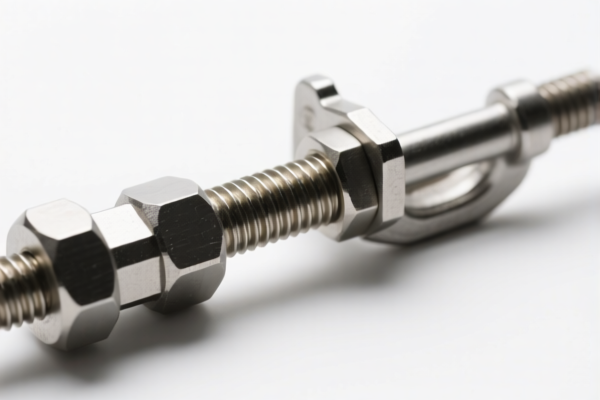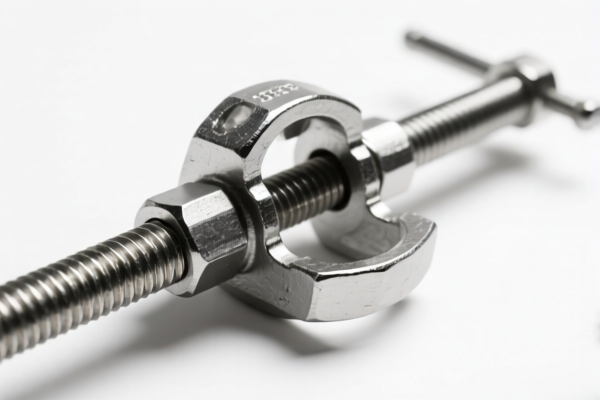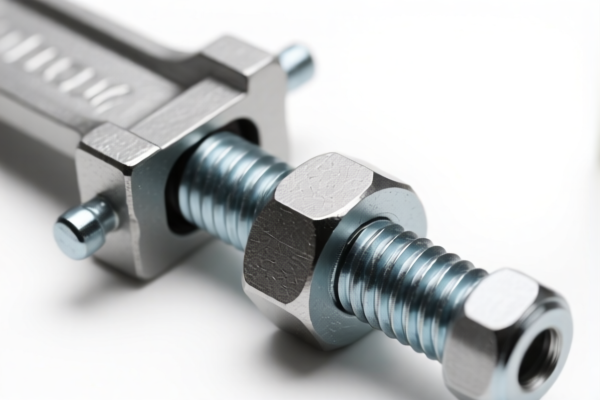| HS Code | Official Doc | Tariff Rate | Origin | Destination | Effective Date |
|---|---|---|---|---|---|
| 8205700060 | Doc | 60.0% | CN | US | 2025-05-12 |
| 8205100000 | Doc | 61.2% | CN | US | 2025-05-12 |
| 8206000000 | Doc | The rate of duty applicable to that article in the set subject t+30.0% | CN | US | 2025-05-12 |
| 7326110000 | Doc | 80.0% | CN | US | 2025-05-12 |
| 7326908688 | Doc | 82.9% | CN | US | 2025-05-12 |
| 6815910011 | Doc | 55.0% | CN | US | 2025-05-12 |
| 6815910071 | Doc | 55.0% | CN | US | 2025-05-12 |




Clamp Tool
A clamp tool is a device used to hold objects securely together to prevent movement or to provide stability during a process like gluing, welding, or machining. They are essential in woodworking, metalworking, construction, and various other applications requiring temporary or permanent fastening.
Material
Clamps are constructed from a variety of materials, chosen based on strength, durability, and intended use:
- Steel: The most common material, offering high strength and durability. Often coated to resist rust and corrosion.
- Aluminum: Lightweight and corrosion-resistant, suitable for applications where weight is a concern or where steel might cause discoloration.
- Plastic: Used for smaller, lighter-duty applications or where damage to the workpiece is a concern. Often used in quick-grip clamps.
- Cast Iron: Found in some heavier-duty clamps, providing significant clamping force but is heavier and more prone to rust.
Purpose
The primary purposes of a clamp tool are:
- Holding: Securely holding workpieces together for joining (e.g., gluing, welding, screwing).
- Stabilization: Providing stability to workpieces during cutting, shaping, or finishing.
- Alignment: Maintaining proper alignment of workpieces during assembly.
- Support: Supporting workpieces during operations like drilling or sanding.
Function
Clamps function by applying force to two or more surfaces, creating friction that prevents movement. The mechanism varies depending on the type of clamp, but generally involves:
- Jaw(s): The parts of the clamp that contact the workpiece.
- Handle/Screw: Used to apply and control the clamping force.
- Frame/Body: Provides structural support and allows for force transmission.
- Trigger/Release Mechanism: (In quick-grip clamps) Allows for rapid engagement and disengagement.
Usage Scenarios
- Woodworking: Joining wood pieces for furniture construction, cabinet making, and other projects.
- Metalworking: Holding metal parts for welding, brazing, soldering, and machining.
- Construction: Securing building materials during framing, roofing, and other tasks.
- Automotive Repair: Holding parts in place during welding or assembly.
- Electronics: Holding components during soldering or gluing.
- DIY Projects: A wide range of home repairs and crafting applications.
Common Types
- C-Clamps: Traditional clamps with a C-shaped frame. Offer high clamping force and versatility.
- Bar Clamps: Long clamps used for larger workpieces. Available in various lengths.
- Spring Clamps: Simple clamps used for quick, light-duty holding. Often used for gluing.
- Quick-Grip Clamps: Clamps with a ratcheting mechanism for rapid engagement and disengagement.
- Pipe Clamps: Utilize a pipe as the clamping bar, allowing for custom lengths.
- Corner Clamps: Designed to hold corners together at 90-degree angles.
- Bench Clamps: Mounted to a workbench for convenient use.
- F-Clamps: Similar to C-Clamps, but with a wider jaw opening.
- Toggle Clamps: Used for repetitive clamping applications, often in manufacturing.
Based on the provided information, clamp tools fall under several potential classifications. Here's a breakdown of relevant HS codes:
-
8205700060: This code covers Handtools (including glass cutters) not elsewhere specified or included; blow torches and similar self-contained torches; vises, clamps and the like, other than accessories for and parts of machine tools or water-jet cutting machines; anvils; portable forges; hand- or pedal-operated grinding wheels with frameworks; base metal parts thereof: Vises, clamps and the like, and parts thereof Vises: Other. This is a specific classification for vises and clamps that are not accessories for machine tools. The base tariff is 5.0%, with an additional 25.0% duty, increasing to 30.0% after April 2, 2025, resulting in a total tariff of 60.0%.
-
7326110000: This code covers Other articles of iron or steel: Forged or stamped, but not further worked: Grinding balls and similar articles for mills. While primarily for grinding balls, the broader category of "articles of iron or steel" may apply if the clamp is made of these materials and is forged or stamped. The base tariff is 0.0%, with an additional 25.0% duty, increasing to 30.0% after April 2, 2025, resulting in a total tariff of 80.0%.
-
7326908688: This code covers Other articles of iron or steel: Other: Other: Other: Other Other. This is a very broad classification for other iron or steel articles. If the clamp doesn't fit into more specific categories, this may apply. The base tariff is 2.9%, with an additional 25.0% duty, increasing to 30.0% after April 2, 2025, resulting in a total tariff of 82.9%.
Regarding HS code 7326110000 and 7326908688, please note the 25% additional duty applies to steel and aluminum products.
According to the provided reference material, the HS code options related to 'clamp tool' are limited, with only the following 3 found.
Customer Reviews
No reviews yet.